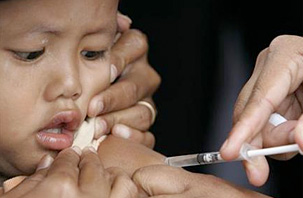- Added 4 Jan 2017
Iganga Mayuge Health and Demographic Surveillance Site
Experience
Iganga-Mayuge Health and Demographic Surveillance Site (IMHDSS) was established in 2004 by Makerere University in partnership with Iganga and Mayuge districts and Karolinska Institutet-Sweden. IMHDSS is run by Makerere University Centre for Health and Population Research (MUCHAP). MUCHAP-IMHDSS provides a research platform as a public health ‘laboratory’ for community oriented epidemiological and operations research and research training. IMHDSS longitudinally generates population based data to facilitate evidence based decision making and policy at all levels – districts, nationally and internationally. MUCHAP-IMHDSS which is an organ of Makerere University supports colleges, schools and departments as a research platform.
The MUCHAP-IMHDSS research site is located in Eastern Uganda about 2-hour drive east of the capital Kampala along the Uganda-Kenya highway. The MUCHAP-IMHDSS covers a contiguous area about 155km2 comprising of 65 villages in Iganga and Mayuge districts. A total of about 85,000 people living in 15,652 households are under surveillance. The majority of the population (62%) lives in rural areas and 38% peri-urban. About half of the HDSS population (49%) is young aged 15years or below, and females comprise 51%, a TFR of 5 and 3 children in rural and peri-urban respectively, crude birth rate (21.1/1000), crude death rate (4.2/1000 live births) with Infant and under five mortality rates of 38.8 per 1000 and 65.8 per 1000 live births respectively. Adult mortality (aged above 60 years) is 36.7 per 1000 with malaria (13.4%) and anemia (11%) being the major causes of all-age mortality (IMHDSS, 2014).
Since 2005, IMHDSS has collected individual level demographic data from 65 villages through routine home visits by trained field assistants twice a year. There are over 20 health facilities which include two major hospitals each with capacity of 200 beds. Data collected include pregnancy and pregnancy outcomes registration (live birth, mis-courage, abortions and still-birth), sex, registration of deaths and migration monitoring (intra-HDSS mobility, in-migration and out-migration). Other data collected are education status, religion, social economic status, marital status, occupation, infant immunization and injury and disability assessment is updated once a year. The IMHDSS works with the district health office with access to key district health metrics and DHIS2. The site utilizes community based births and deaths reporters - “the Scouts” who visit homes throughout the year to supplement routine HDSS home visits. Scouts notify IMHDSS offices about occurrence of deaths and births and this has improved pregnancy, pregnancy outcomes and deaths reporting in the surveillance area. All households, key institutions and structures like schools, public health facilities both private and public including drug shops are geo-referenced with GPS coordinates.
Various studies have been conducted under IMHDSS research platform including malaria vaccine trials, TB prevalence and case identification studies, maternal and newborn health, malaria and pneumonia, epilepsy and cerebral palsy, NCDs like diabetes and obesity, injury and disabilities, groin hernia surgery, cause of death through verbal autopsy, antibiotic resistance, family planning, integrated community case management (iCCM), HIV/AIDS and ART uptake, care seeking behaviors, and many other.
Research interests
Makerere University,Karolinska Institutet-Sweden, John Hopkins School of Public Health, Iganga District Health Office, Mayuge District Health Office, New York University
Disease areas
- HIV
- Malaria
- Maternal Health
- Mental Health
- Neglected Tropical Diseases (NTDs)
- Newborn Health
- Sexually Transmitted Diseases (STDs)
- TB
Media
Contact this site
To: dankajungu, Site Leader at Iganga Mayuge Health and Demographic Surveillance Site
Please Login to contact a site.